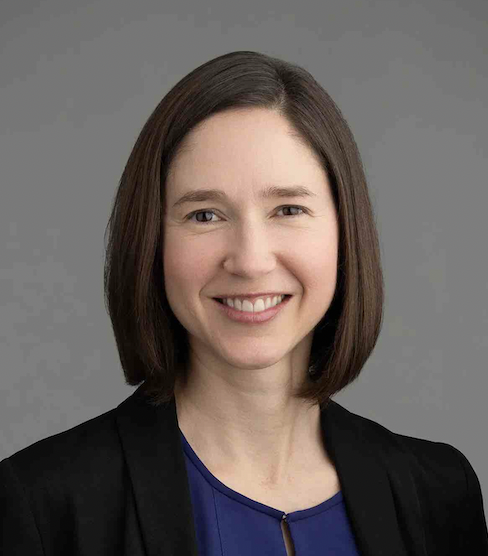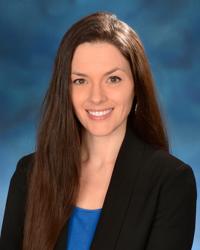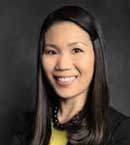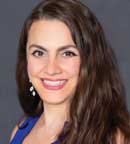When I was considering ophthalmology as my subspecialty of choice, one of my medical school mentors said, “Ophthalmology is a small field; sooner or later you’ll have connections all over the world.” I didn’t realize how true that statement was until I attended my sixth Women in Ophthalmology (WIO) Summer Symposium (SS) in Carlsbad, Calif., held Aug. 22-25, 2024, led by program chair Anna Momont, MD, and cochair Janet Alexander, MD.
As soon as I arrived at the resort at the Omni La Costa Resort & Spa, I changed into my swimsuit, slathered on some sunscreen, and made a beeline for the closest restaurant. While waiting for the lunch I was planning to enjoy by the pool, I overheard conversations over peach bellinis from other WIO attendees reuniting. Having scattered to far reaches of the country or across the world, these were prior co-residents, colleagues, and friends catching up in the bright, Southern California sunshine.
What I’ve learned over the years is that while ophthalmology is a small field, the community of women in ophthalmology is an even smaller world, but mightier for it. Historically, the field of ophthalmology, like many areas of medicine, has been male-dominated. However, with the work of organizations like WIO, recent decades have witnessed significant strides in gender diversity and career achievement, with an increasing number of women entering and excelling in the specialty since the 1990s when the first WIO SS was held.
Despite these advances, challenges remain regarding gender disparities in leadership roles, academic recognition and work-life balance. From the opening session, “Visions for the Future,” the intentions for the meeting were set. The WIO conference this year provided a platform for addressing these hot-button issues, celebrating progress and empowering female ophthalmologists to continue pushing the boundaries of the profession.
The WIO SS: Gender Equality
Over the past few decades, the presence of women in medicine has steadily increased. Data from the AAMC showed that in 2023-2024, women accounted for 55% of medical school students. In ophthalmology, this trend is best reflected in the training years where approximately 40% of all ophthalmology residents are female.1 However, the effect peters out at later metrics of career advancement and positions of power.

The WIO conference this year highlighted the achievements of women in the field by showcasing the work of leading female ophthalmologists who have made significant contributions to clinical practice, research and education. Dr. Barbara Arnold was presented with the Bernice Z. Brown Memorial Lecture Award by WIO CEO Lisa Nijm, MD, JD, and Dr. Fasika Woreta received the Honorary Lecture Award from WIO President Christina Y. Weng, MD, MBA. Most importantly, perhaps, the conference provided a platform for these role models to speak, as the next generation was enraptured by these women who demonstrated that it is possible to achieve excellence in a demanding, male-dominated specialty.
The WIO SS: Mentorship
Mentorship is always a core tenet of the WIO Summer Symposium, and this year was no exception. A mix of educational sessions on career advancement at every stage of training and clinical practice, as well as numerous networking opportunities were offered. This year, the WIO conference continued to expand connections between medical students, trainees, and attendings in private or academic practice, offering guidance on everything from interview skills and applications for ophthalmology residency to surgical skill labs and navigating work-life balance. The WIO mentorship committee also held their annual raffle and offered prizes from free conference registrations to eye masks while mentees and mentors connected over cocktails and hors d'oeuvres.

The WIO SS: Research and Innovation
The WIO conference also showcased cutting-edge research and innovations led by female ophthalmologists. From advancements in surgical techniques to innovative treatments for ophthalmic diseases, the conference confirmed that female researchers are at the forefront of many of the most exciting developments in the field. The conference provided a forum for these researchers to present their work, exchange ideas and collaborate with peers from around the world.
Some notable presentations at the conference focused on navigating the future of inherited retinal diseases and solving the thyroid eye disease puzzle, topics that cover rapidly evolving areas with enormous implications for patients. These advancements and conversations not only improve patient care but also position women as leaders in the future of ophthalmology.

The WIO SS: Self-Care and Work-Life Balance
Balancing a demanding medical career with personal life is a challenge faced by many ophthalmologists. This burden is particularly heavy for women, who often face a disproportionate amount of domestic responsibilities on top of professional obligations. The WIO SS addressed this issue head-on, with sessions focused on work-life balance and self-care.
Speakers in breakout sessions emphasized the importance of self-care and setting boundaries to maintain both professional and personal well-being. From managing cluttered inboxes to surgical ergonomics and (peri)menopause to fertility preservation and skincare for the busy woman, there was scarcely a relevant topic that went unexplored.
Throughout the conference, there was also active discussion regarding the need for institutional support to address work-life balance issues unique to women, such as flexible scheduling and parental leave policies. These discussions underscored the importance of creating a supportive work environment that allows women to thrive at work and at home.
The WIO SS: Inspire and Unite
The WIO meeting in Carlsbad was a powerful reminder of the progress that has been made in advancing the role of women in ophthalmology, but it also highlighted the work that remains to be done. As more women enter the field, it is crucial to continue advocating for gender equity and parity at work and at home to ensure that women have the same opportunities for leadership, recognition and career advancement as their male counterparts.
The conference also served as a call to action for the entire ophthalmology community. By fostering an inclusive environment and promoting diversity in all its forms, the field can continue to innovate and provide the highest quality care to patients. This year, the conference drew a diverse group of both male and female attendees, from medical students to residents and fellows to seasoned practitioners and academic leaders, all united by a common goal: to support and advance the careers of women in ophthalmology. The attendees of the WIO conference left inspired, empowered and ready to lead the way in shaping the future of ophthalmology.
Conclusion
The WIO SS in Carlsbad was not just an event but another step in a movement — a movement toward a more equitable and inclusive future in ophthalmology. It celebrated the achievements of women in the field, addressed the challenges they face and laid the groundwork for continued progress. As the number of women in ophthalmology continues to grow, so will their impact on the profession, ensuring that the future of eye care is bright for everyone.
Editor's note: Dr. Azad acknowledges Drs. Momont, Alexander, Weng and Nijm for their contributions to and collaboration on this article.













